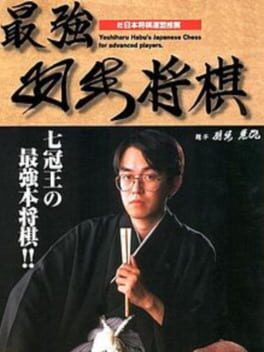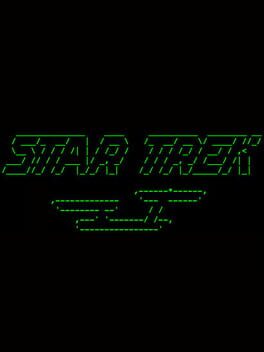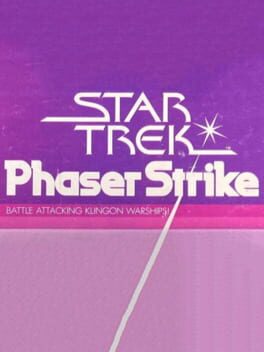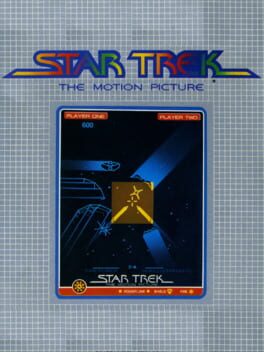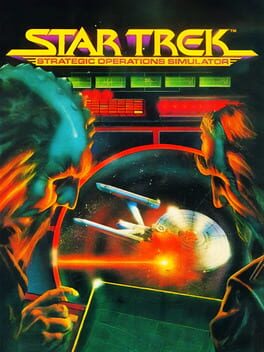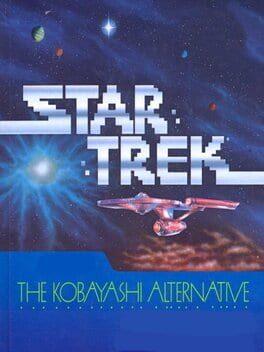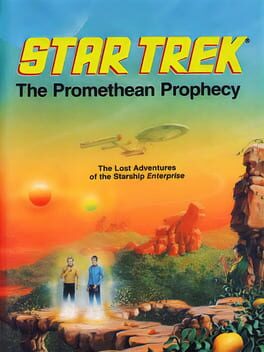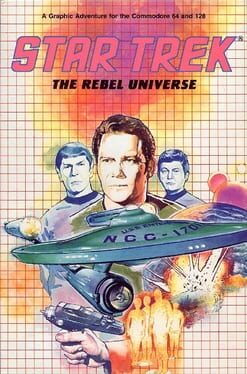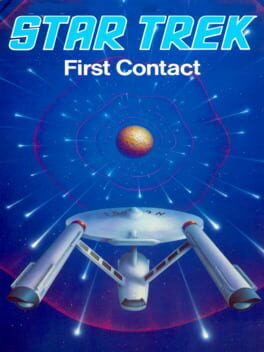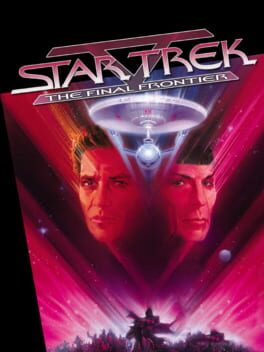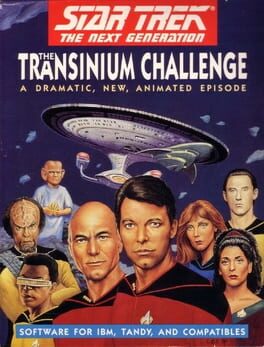Cube1701
1996
The movement of Mario still feels amazing all these years later. His move set is brilliant with all of his moves (minus the special hats) available form the get-go, it’s just a case of learning it and figuring out the best way do move. Most people will start off ding taller jumps by doing the backflip, but then transition to the quick turn jump to get up to the tall platforms. Even now, it’s an absolute joy to control.
The camera from the original game is the main part of the game that now feels clunky. It was pretty amazing when the game came out, but it’s one aspect of games that has improved over time.
The levels are small, but it’s a style that really suits the game. They’re packed full of secrets, with six stars to find in each one (plus an extra star for collecting 100 coins). Once you collect a star, you’re thrown out of the level, which does mean you have to re-do parts of levels multiple times, but there are sometimes changes to the level depending on which star you collect.
Each level has a very distinct feel to it and I enjoyed every level in the game, with the exception of two of the water levels. While some have generic themes (lava, water and ice), the levels are still built in unique ways, and even matching themes (like the two snow levels) don’t feel like a reuse due to the level design.
Other than a couple of stars that include the wing, metal and invisible caps, you can also complete levels before moving on, or just do a couple of stars and try somewhere else. You only need 70 out of 120 stars to complete the game (far fewer if you choose to do glitches), but it’s enjoyable collecting them all.
To unlock different sections of the castle (and access more levels), you need to complete Bowser’s levels. There are three in total (the last one being to save Peach) and these are much more linear platform challenges, which creates a nice change of pace. At the end of these you have to face off against Bowser, grabbing his tail and spinning him to throw him into bombs, and I’m still absolutely dreadful at aiming my throws.
The final section of the game has some outstanding levels.
Wet-Dry World is the third water level of the game, but this one stands out much more due to the mechanic of raising and lowering the water levels. There are different ways to move upwards depending on the water level, and you’ll need to make use of these to collect all the stars.
Tiny-Huge Island has you using pipes to swap between a giant Mario and a mini Mario. You get to see cute tiny goombas or have to fight ones that are much larger than Mario. It’s not Mario’s size that actually changes, but the level itself. It’s an absolutely adorable level full of joy.
Tick Tock Clock is actually a lot smaller than I remember, but is focused on well timed jumps. The unique aspect of this level is that the level entrance is itself a clockface, and where the minute hand points alters the speed of the objects in the level, or even stops them completely. I have quite strong memories of trying to figure out what was happening when this happened as a kid.
The final main level, Rainbow Ride, is more linear than most levels, with different segments connected via magic carpets. You’ll need to jump off the carpets to avoid obstacles, but if you take too long, the carpets will vanish. This level requires you to have to mastered Mario’s moveset.
Super Mario 64 is still an absolute joy to play, especially so with an updated camera. I think a full remake would alter the game too much, as the level design and movement is integral to its identity. It just needs a bit of sprucing up, and I really hope we get an official version that does this at some point.
This was an amazing start for the Nintendo 64. Not only was this game integral to the development of 3D games as a whole, but the gameplay and levels still hold up today. Games keep trying to be bigger and better, but smaller and varies levels are also a great approach.
The camera from the original game is the main part of the game that now feels clunky. It was pretty amazing when the game came out, but it’s one aspect of games that has improved over time.
The levels are small, but it’s a style that really suits the game. They’re packed full of secrets, with six stars to find in each one (plus an extra star for collecting 100 coins). Once you collect a star, you’re thrown out of the level, which does mean you have to re-do parts of levels multiple times, but there are sometimes changes to the level depending on which star you collect.
Each level has a very distinct feel to it and I enjoyed every level in the game, with the exception of two of the water levels. While some have generic themes (lava, water and ice), the levels are still built in unique ways, and even matching themes (like the two snow levels) don’t feel like a reuse due to the level design.
Other than a couple of stars that include the wing, metal and invisible caps, you can also complete levels before moving on, or just do a couple of stars and try somewhere else. You only need 70 out of 120 stars to complete the game (far fewer if you choose to do glitches), but it’s enjoyable collecting them all.
To unlock different sections of the castle (and access more levels), you need to complete Bowser’s levels. There are three in total (the last one being to save Peach) and these are much more linear platform challenges, which creates a nice change of pace. At the end of these you have to face off against Bowser, grabbing his tail and spinning him to throw him into bombs, and I’m still absolutely dreadful at aiming my throws.
The final section of the game has some outstanding levels.
Wet-Dry World is the third water level of the game, but this one stands out much more due to the mechanic of raising and lowering the water levels. There are different ways to move upwards depending on the water level, and you’ll need to make use of these to collect all the stars.
Tiny-Huge Island has you using pipes to swap between a giant Mario and a mini Mario. You get to see cute tiny goombas or have to fight ones that are much larger than Mario. It’s not Mario’s size that actually changes, but the level itself. It’s an absolutely adorable level full of joy.
Tick Tock Clock is actually a lot smaller than I remember, but is focused on well timed jumps. The unique aspect of this level is that the level entrance is itself a clockface, and where the minute hand points alters the speed of the objects in the level, or even stops them completely. I have quite strong memories of trying to figure out what was happening when this happened as a kid.
The final main level, Rainbow Ride, is more linear than most levels, with different segments connected via magic carpets. You’ll need to jump off the carpets to avoid obstacles, but if you take too long, the carpets will vanish. This level requires you to have to mastered Mario’s moveset.
Super Mario 64 is still an absolute joy to play, especially so with an updated camera. I think a full remake would alter the game too much, as the level design and movement is integral to its identity. It just needs a bit of sprucing up, and I really hope we get an official version that does this at some point.
This was an amazing start for the Nintendo 64. Not only was this game integral to the development of 3D games as a whole, but the gameplay and levels still hold up today. Games keep trying to be bigger and better, but smaller and varies levels are also a great approach.
1996
Part of what made me want to play through all the Nintendo 64 games was growing up with Future Publishing’s N64 magazine. I only had a small number of games myself, but read about so many more. Pilotwings is one I remember getting mentioned a lot in the magazine throughout the years, and it always sounded fascinating. The image of a cannon and Mount Rushmore (with Mario’s face) was one I distinctly remember seeing a lot.
Pilotwings is an arcade-style flight sim game, although still requires a lot of skill to perfect, especially landings. There are three main vehicles, each of which have a series of challenges to complete, which then unlock additional modes.
The glider is first up and is definitely the weakest of the three main types. I can appreciate how it must have felt brand new, using a standard controller to control a game like this instead of a flight stick, not to mention the 3D worlds, which have lots of nice little details.
The challenges start out simple, and get more complex and difficult. There’s a nice variety such as quickly going through a string of rings, finding more widespread rings and finding certain objects to take photos of. You’re scored based on your speed and accuracy, and it all hangs on your landing, which is difficult but does feel like you’re in control.
The Rocket Belt (aka a jet pack) is immensely fun to fly. You have a strong thrust and a weaker thrust and will need to get across the map quickly, burst balloons, fly through a cave and land on platforms. Trying to avoid hitting the ground is difficult, even though the game tries to help by having a bar show up when you’re close to the ground.
I think the weakest aspect of Pilotwings was the camera, which was a challenge in early 3D games. This one is a bit strange as it pans the camera away from you rather than around your character, and reverts back when you stop pressing the c-button. Despite this, the jet pack is just extremely enjoyable.
The gyrocopyer is the third main one, and is equipped with rockets to blast targets with. This is much faster than the previous vehicles, so tend to use the whole islands, which are all really nicely designed with lots of little things to look at. I especially love “Little States”, a mini mainland USA with lots of details representing a few important locations. It would be lovely to see updated versions of these islands.
With the gyrocopter, you’ll have some ring challenges that feel like intense races and you get to battle a giant mech as it terrorises a city. The gyrocopter is a lot of fun, and is probably the easiest to land, although being accurate for a best score is still difficult.
As you complete the challenges, you’ll unlock bonus games. The first of which is a complete blast: human cannonball. You get three attempts at each target, with your best score out of the three being counted. This means that you have a few attempts to adjust your aim and power to account for the wind speed.
While it stars off simple, like the rest of Pilotwings, it gets really difficult, with some targets you can only see on the radar as they’re behind a mountain or below the cannon. It doesn’t stop the mode being enjoyable, though.
The second extra mode is skydiving. It starts with a rather wonky formation challenge above the clouds, but feels amazing when you get past and get full control of skydiving on the island. I wasn’t very good at the actual scoring, but the skydiving itself is really fun.
The last one I couldn’t get the hang of. They’re a kind of bouncing boot, but the controls just feel strange and I kept bouncing in directions I didn’t want to go and just fell over a lot.
My favourite mode of the game is locked behind getting a silver medal on all of these challenges, although you can temporarily try it out by finding hidden stars in the jetpack mode.
The Birdman mode is a free flight mode. You don’t have to worry about fuel and staying in the air is easy. There’s no challenges to complete, it’s all about enjoying the sights. It’s just nice and relaxing. The main mistake is how many people playing the game may never actually get to try it due to the game’s difficulty and needing so much to unlock it (I have to admit, I ended up using cheats).
Pilotwings 64 is a very interesting game and I really think it deserves another go. It did get a game on 3DS, but that just used Wuhu Island from Wii Sports Resort, which already had a plane more. I’d love a sequel that brought us the islands from this game in more detail, some new ones, plus all these modes and some new stuff. I’d also love just being able to choose free flight for any of the vehicles – having the challenges dotted across the maps would also be a great touch. A new Pilotwings could be a ton of fun.
Pilotwings is an arcade-style flight sim game, although still requires a lot of skill to perfect, especially landings. There are three main vehicles, each of which have a series of challenges to complete, which then unlock additional modes.
The glider is first up and is definitely the weakest of the three main types. I can appreciate how it must have felt brand new, using a standard controller to control a game like this instead of a flight stick, not to mention the 3D worlds, which have lots of nice little details.
The challenges start out simple, and get more complex and difficult. There’s a nice variety such as quickly going through a string of rings, finding more widespread rings and finding certain objects to take photos of. You’re scored based on your speed and accuracy, and it all hangs on your landing, which is difficult but does feel like you’re in control.
The Rocket Belt (aka a jet pack) is immensely fun to fly. You have a strong thrust and a weaker thrust and will need to get across the map quickly, burst balloons, fly through a cave and land on platforms. Trying to avoid hitting the ground is difficult, even though the game tries to help by having a bar show up when you’re close to the ground.
I think the weakest aspect of Pilotwings was the camera, which was a challenge in early 3D games. This one is a bit strange as it pans the camera away from you rather than around your character, and reverts back when you stop pressing the c-button. Despite this, the jet pack is just extremely enjoyable.
The gyrocopyer is the third main one, and is equipped with rockets to blast targets with. This is much faster than the previous vehicles, so tend to use the whole islands, which are all really nicely designed with lots of little things to look at. I especially love “Little States”, a mini mainland USA with lots of details representing a few important locations. It would be lovely to see updated versions of these islands.
With the gyrocopter, you’ll have some ring challenges that feel like intense races and you get to battle a giant mech as it terrorises a city. The gyrocopter is a lot of fun, and is probably the easiest to land, although being accurate for a best score is still difficult.
As you complete the challenges, you’ll unlock bonus games. The first of which is a complete blast: human cannonball. You get three attempts at each target, with your best score out of the three being counted. This means that you have a few attempts to adjust your aim and power to account for the wind speed.
While it stars off simple, like the rest of Pilotwings, it gets really difficult, with some targets you can only see on the radar as they’re behind a mountain or below the cannon. It doesn’t stop the mode being enjoyable, though.
The second extra mode is skydiving. It starts with a rather wonky formation challenge above the clouds, but feels amazing when you get past and get full control of skydiving on the island. I wasn’t very good at the actual scoring, but the skydiving itself is really fun.
The last one I couldn’t get the hang of. They’re a kind of bouncing boot, but the controls just feel strange and I kept bouncing in directions I didn’t want to go and just fell over a lot.
My favourite mode of the game is locked behind getting a silver medal on all of these challenges, although you can temporarily try it out by finding hidden stars in the jetpack mode.
The Birdman mode is a free flight mode. You don’t have to worry about fuel and staying in the air is easy. There’s no challenges to complete, it’s all about enjoying the sights. It’s just nice and relaxing. The main mistake is how many people playing the game may never actually get to try it due to the game’s difficulty and needing so much to unlock it (I have to admit, I ended up using cheats).
Pilotwings 64 is a very interesting game and I really think it deserves another go. It did get a game on 3DS, but that just used Wuhu Island from Wii Sports Resort, which already had a plane more. I’d love a sequel that brought us the islands from this game in more detail, some new ones, plus all these modes and some new stuff. I’d also love just being able to choose free flight for any of the vehicles – having the challenges dotted across the maps would also be a great touch. A new Pilotwings could be a ton of fun.
1996
I knew when planning to experience all Nintendo 64 game that there would be some I would barely be able to play. In particular, Japanese-exclusive games. I don’t speak Japanese and, while some games have translation guides or even fully fledged fan translations you can patch into the game, there can still be some with difficulties.
Strongest Habu Shogi is an adaptation of the board game and features Yoshiharu Habu, the best Shogi player at the time. Shogi is a Japanese variant of chess, heavily modified and more complex. Some major differences are how captured pieces can be brought back onto the board, and pieces can be promoted to become stronger, with different movement rules.
One tool which is surprisingly handy for menus is Google lens, just point it at your TV and is will make rough translations. It’s not always perfect, but good enough for getting to the right modes and settings.
The biggest difficulty I had with Strongest Habu Shogi was identifying the pieces. They’re all the same shape with the name written in Japanese. Even using a picture of what each piece means and does, I found it very difficult to identify them, due to different fonts. To make matters worse, Strongest Habu Shogi doesn’t have any aids to show potential moves you can make, so I found it very difficult to play this version. I did try to practice using an online version of Shogi (with English pieces), but I was still utterly awful at that.
For people who understand Japanese and Shogi, this game did offer quite a lot of features. You can play against computers or another player, play a version where you only get 10 seconds per turn, play “reverse shogi” or play though the main campaign where you have to beat 18 other opponents of increasing difficulty. The AI is specifically tailored so that the same moves you make will result in the same responses, so there is a guide available that just lists moves that will make you win, although that’s not really beating the game.
It also has a bunch of teaching tools. One explains the rules (in Japanese) and there’s also a puzzle mode where you have to win matches based on the setup of a few pieces. There’s also a mode that lets you watch famous Shogi matches play out.
In Japan, Strongest Habu Shogi did not sell very well. It was one of three launch titles on the N64, but only 1% of N64 owners picked it up then. There are more shogi games on the N64 and the game is featured in Nintendo’s own Clubhouse Games series, with the Switch version featuring English letters to identify pieces as well as guides to show possible moves.
Strongest Habu Shogi is an adaptation of the board game and features Yoshiharu Habu, the best Shogi player at the time. Shogi is a Japanese variant of chess, heavily modified and more complex. Some major differences are how captured pieces can be brought back onto the board, and pieces can be promoted to become stronger, with different movement rules.
One tool which is surprisingly handy for menus is Google lens, just point it at your TV and is will make rough translations. It’s not always perfect, but good enough for getting to the right modes and settings.
The biggest difficulty I had with Strongest Habu Shogi was identifying the pieces. They’re all the same shape with the name written in Japanese. Even using a picture of what each piece means and does, I found it very difficult to identify them, due to different fonts. To make matters worse, Strongest Habu Shogi doesn’t have any aids to show potential moves you can make, so I found it very difficult to play this version. I did try to practice using an online version of Shogi (with English pieces), but I was still utterly awful at that.
For people who understand Japanese and Shogi, this game did offer quite a lot of features. You can play against computers or another player, play a version where you only get 10 seconds per turn, play “reverse shogi” or play though the main campaign where you have to beat 18 other opponents of increasing difficulty. The AI is specifically tailored so that the same moves you make will result in the same responses, so there is a guide available that just lists moves that will make you win, although that’s not really beating the game.
It also has a bunch of teaching tools. One explains the rules (in Japanese) and there’s also a puzzle mode where you have to win matches based on the setup of a few pieces. There’s also a mode that lets you watch famous Shogi matches play out.
In Japan, Strongest Habu Shogi did not sell very well. It was one of three launch titles on the N64, but only 1% of N64 owners picked it up then. There are more shogi games on the N64 and the game is featured in Nintendo’s own Clubhouse Games series, with the Switch version featuring English letters to identify pieces as well as guides to show possible moves.
1996
It took a few months for the Nintendo 64 for a new game, and when it arrived it met with glowing reviews. I do remember playing this slightly as a kid, and distinctly remember having a lot of trouble with it due to being awful at it. However, it was only short goes as it was a friend’s copy of the game.
Wave Race 64 is a jet ski racing game. Not only do you have to complete the circuits, but you have to pass buy buoys on the correct side. Miss one and you’ll lose some power, miss five and you’ll fail that race.
The ocean and how it moves is the main impressive part of the game. The ocean moves in a realistic way and it still stands out as water in games is still not easy to do today – to the point that it’s really games that are entirely focused on water that have proper wave simulation (games like Sea of Thieves). The water is also not just for looks – it affects the movement of your jet ski and you’ll have to work out how to race using them to your advantage.
The levels in Wave Race also manage to feel distinctive, which is not an easy task for water based games. While I’ve just praised the waves a lot, one stand out level is Drake Lake – which doesn’t have waves. The level starts off foggy but clears up as you progress, with the lake having a silvery reflective surface. There’s something really beautiful about this level, even today.
Another very memorable one is Southern Lake. In this level, the tide is going out. Each lap, the obstacles will be different due to the level of the water. A big pier blocks the way on the first lap, but you can zoom through its supports on later laps. Unfortunately, the game only has 8 courses (plus a bonus training course)
There are three main difficulties in Wave Race, however the difficulty doesn’t just alter the enemy racers. Instead, the locations of the buoys are different, making navigating the levels much more difficult. You need to truly master the waves to succeed at the game and your reward is reverse mode, where you race across the tracks backwards, which makes the levels feel a lot different.
Outside of the main championship mode, Wave Race offers time trial and a stunt mode. You can set your own high stores in the stunt mode as you have to make it to the next checkpoint while hitting rings and performing tricks. The other main move is a 2 player race.
Wave Race 64 doesn’t contain a lot of stuff, but there’s so much detail in what it does do that it makes up for it. It’s a really fun game that rewards skill and offers a significant challenge. Wave Race got a sequel on the GameCube, but there’s nothing out now that’s quite the same.
Wave Race 64 is a jet ski racing game. Not only do you have to complete the circuits, but you have to pass buy buoys on the correct side. Miss one and you’ll lose some power, miss five and you’ll fail that race.
The ocean and how it moves is the main impressive part of the game. The ocean moves in a realistic way and it still stands out as water in games is still not easy to do today – to the point that it’s really games that are entirely focused on water that have proper wave simulation (games like Sea of Thieves). The water is also not just for looks – it affects the movement of your jet ski and you’ll have to work out how to race using them to your advantage.
The levels in Wave Race also manage to feel distinctive, which is not an easy task for water based games. While I’ve just praised the waves a lot, one stand out level is Drake Lake – which doesn’t have waves. The level starts off foggy but clears up as you progress, with the lake having a silvery reflective surface. There’s something really beautiful about this level, even today.
Another very memorable one is Southern Lake. In this level, the tide is going out. Each lap, the obstacles will be different due to the level of the water. A big pier blocks the way on the first lap, but you can zoom through its supports on later laps. Unfortunately, the game only has 8 courses (plus a bonus training course)
There are three main difficulties in Wave Race, however the difficulty doesn’t just alter the enemy racers. Instead, the locations of the buoys are different, making navigating the levels much more difficult. You need to truly master the waves to succeed at the game and your reward is reverse mode, where you race across the tracks backwards, which makes the levels feel a lot different.
Outside of the main championship mode, Wave Race offers time trial and a stunt mode. You can set your own high stores in the stunt mode as you have to make it to the next checkpoint while hitting rings and performing tricks. The other main move is a 2 player race.
Wave Race 64 doesn’t contain a lot of stuff, but there’s so much detail in what it does do that it makes up for it. It’s a really fun game that rewards skill and offers a significant challenge. Wave Race got a sequel on the GameCube, but there’s nothing out now that’s quite the same.
1971
The first Star Trek video game, made for the Sigma 7 and then ported to the HP 2000C minicomputer. These were devices that had no screens, but were instead connected to a printer and printed the new game game as you played.
This game was ported to many different systems, under a lot of different names such as Apple Trek, Tari Trek and Dragon Trek. I have chosen a couple that I will go through with significant changes, as the vast majority run the same, just ported to different systems, with the latest major version being released in 2023.
In this game, you need to destroy a set amount of Klingons in a few days. You need to explore the area, as well as dock at stations to repair yourself. Here is one of my complete failure attempts:
ENTER SEED NUMBER 12
INITIALIZING...
YOU MUST DESTROY 19 KINGONS IN 30 STARDATES WITH 6 STARBASES
COMBAT AREA CONDITION RED
SHIELDS DANGEROUSLY LOW
-=--=--=--=--=--=--=--=-
<>
+++ STARDATE 2900
CONDITION RED
QUADRANT 4,2
SECTOR 5,1
ENERGY 3000
SHIELDS 0
PHOTON TORPEDOES 10
-=--=--=--=--=--=--=--=-
COMMAND 2
LONG RANGE SENSOR SCAN FOR QUADRANT 4,2
-------------------
| 008 | 001 | 003 |
-------------------
| 007 | 101 | 008 |
-------------------
| 114 | 003 | 008 |
-------------------
COMMAND 0
COURSE (1-9) 8
WARP FACTOR (0-8) 5
118 UNIT HIT ON ENTERPRISE FROM SECTOR 2,2
(0 LEFT)
THE ENTERPRISE HAS BEEN DESTROYED. THE FEDERATION WILL BE CONQUERED
THERE ARE STILL 19 KLINGON BATTLE CRUISERS
YOU MUST DESTROY 13 KINGONS IN 30 STARDATES WITH 5 STARBASES
COMBAT AREA CONDITION RED
SHIELDS DANGEROUSLY LOW
-=--=--=--=--=--=--=--=-
STARDATE 3200
+++ CONDITION RED
<> QUADRANT 4,4
SECTOR 6,4
ENERGY 3000
SHIELDS 0
* PHOTON TORPEDOES 10
-=--=--=--=--=--=--=--=-
COMMAND 2
LONG RANGE SENSOR SCAN FOR QUADRANT 4,4
-------------------
| 006 | 001 | 007 |
-------------------
| 008 | 106 | 002 |
-------------------
| 002 | 016 | 007 |
-------------------
COMMAND 0
COURSE (1-9) 5
WARP FACTOR (0-8) 3
273 UNIT HIT ON ENTERPRISE FROM SECTOR 5,3
(0 LEFT)
THE ENTERPRISE HAS BEEN DESTROYED. THE FEDERATION WILL BE CONQUERED
THERE ARE STILL 13 KLINGON BATTLE CRUISERS
This game is very difficult, as you need to hunt for Klingons, navigate around and so lots of actual calculations to work out how to navigate as well as aim torpedoes. For such an old game, there is a surprising amount of detail in it, with enemies that attack you, systems that break, scanning and even a built-in calculator for torpedoes.
Your systems breaking are completely random, though, and something like your warp drive breaking can render a playthrough unwinnable as you won’t be able to find a starbase in time. Even without any damage, navigating around is very difficult as you need to set a direction and speed, and take into account both sector and quadrant locations.
Despite all this, there’s just something that’s a lot of fun about trying to do all this with such basic input, having to figure it all out yourself. It’s a fascinating game and it’s definitely impressive for what it was originally made for.
This game was ported to many different systems, under a lot of different names such as Apple Trek, Tari Trek and Dragon Trek. I have chosen a couple that I will go through with significant changes, as the vast majority run the same, just ported to different systems, with the latest major version being released in 2023.
In this game, you need to destroy a set amount of Klingons in a few days. You need to explore the area, as well as dock at stations to repair yourself. Here is one of my complete failure attempts:
ENTER SEED NUMBER 12
INITIALIZING...
YOU MUST DESTROY 19 KINGONS IN 30 STARDATES WITH 6 STARBASES
COMBAT AREA CONDITION RED
SHIELDS DANGEROUSLY LOW
-=--=--=--=--=--=--=--=-
<>
+++ STARDATE 2900
CONDITION RED
QUADRANT 4,2
SECTOR 5,1
ENERGY 3000
SHIELDS 0
PHOTON TORPEDOES 10
-=--=--=--=--=--=--=--=-
COMMAND 2
LONG RANGE SENSOR SCAN FOR QUADRANT 4,2
-------------------
| 008 | 001 | 003 |
-------------------
| 007 | 101 | 008 |
-------------------
| 114 | 003 | 008 |
-------------------
COMMAND 0
COURSE (1-9) 8
WARP FACTOR (0-8) 5
118 UNIT HIT ON ENTERPRISE FROM SECTOR 2,2
(0 LEFT)
THE ENTERPRISE HAS BEEN DESTROYED. THE FEDERATION WILL BE CONQUERED
THERE ARE STILL 19 KLINGON BATTLE CRUISERS
YOU MUST DESTROY 13 KINGONS IN 30 STARDATES WITH 5 STARBASES
COMBAT AREA CONDITION RED
SHIELDS DANGEROUSLY LOW
-=--=--=--=--=--=--=--=-
STARDATE 3200
+++ CONDITION RED
<> QUADRANT 4,4
SECTOR 6,4
ENERGY 3000
SHIELDS 0
* PHOTON TORPEDOES 10
-=--=--=--=--=--=--=--=-
COMMAND 2
LONG RANGE SENSOR SCAN FOR QUADRANT 4,4
-------------------
| 006 | 001 | 007 |
-------------------
| 008 | 106 | 002 |
-------------------
| 002 | 016 | 007 |
-------------------
COMMAND 0
COURSE (1-9) 5
WARP FACTOR (0-8) 3
273 UNIT HIT ON ENTERPRISE FROM SECTOR 5,3
(0 LEFT)
THE ENTERPRISE HAS BEEN DESTROYED. THE FEDERATION WILL BE CONQUERED
THERE ARE STILL 13 KLINGON BATTLE CRUISERS
This game is very difficult, as you need to hunt for Klingons, navigate around and so lots of actual calculations to work out how to navigate as well as aim torpedoes. For such an old game, there is a surprising amount of detail in it, with enemies that attack you, systems that break, scanning and even a built-in calculator for torpedoes.
Your systems breaking are completely random, though, and something like your warp drive breaking can render a playthrough unwinnable as you won’t be able to find a starbase in time. Even without any damage, navigating around is very difficult as you need to set a direction and speed, and take into account both sector and quadrant locations.
Despite all this, there’s just something that’s a lot of fun about trying to do all this with such basic input, having to figure it all out yourself. It’s a fascinating game and it’s definitely impressive for what it was originally made for.
The Microvision was the first handheld console that came with interchangeable cartridges – the whole front of the unit peeled off and could be replaced with a new game. With it being so early, the display was limited, boasting a whole 16×16 pixels. Although there is something satisfying about these big chunky pixels.
In Star Trek: Phaser Strike, you destroy incoming ships by shooting from one of three different directions. Your shots are slow, so you have to time your shot based on where your enemy will be. It’s a very simple game, but for it’s format, it’s fun for a quick blast.
In Star Trek: Phaser Strike, you destroy incoming ships by shooting from one of three different directions. Your shots are slow, so you have to time your shot based on where your enemy will be. It’s a very simple game, but for it’s format, it’s fun for a quick blast.
Made for the very unique vector-based console called the Vectrex. This console is made up of white lines on a black background. In order to add colour and a HUD, you have to put plastic sheets on top of the screen.
In Star Trek: The Motion Picture, you turn in a 360 degree angle, blasting enemy ships. Torpedoes will get fired towards you and you can either dodge by turning away so the torpedo is no longer on screen or by holding down the shield button to block them. Your shields have limited capabilities, so you’ll need to connect to a space station to recharge.
The game is simple but a lot of fun. It’s not the most “Star Trek” game, something the developers also thought as it was sold in some regions under the names “Space Ship” or “Harmageddon”
In Star Trek: The Motion Picture, you turn in a 360 degree angle, blasting enemy ships. Torpedoes will get fired towards you and you can either dodge by turning away so the torpedo is no longer on screen or by holding down the shield button to block them. Your shields have limited capabilities, so you’ll need to connect to a space station to recharge.
The game is simple but a lot of fun. It’s not the most “Star Trek” game, something the developers also thought as it was sold in some regions under the names “Space Ship” or “Harmageddon”
The first official Star Trek arcade game, developed by Sega with a release in two forms: a stand up cabinet and a sit down machine. The graphics are similar to the Vectrex game, using neat lines.
The game gives you both a top down view and a first person view. The objective is to destroy all enemy ships in sa h area. You can recharge shield and restock on torpedoes at starbases, although some of these will be targeted by the Klingons.
It’s a fun little game.
The game gives you both a top down view and a first person view. The objective is to destroy all enemy ships in sa h area. You can recharge shield and restock on torpedoes at starbases, although some of these will be targeted by the Klingons.
It’s a fun little game.
The manual is a very important requirement for playing this: There’s a big backstory, plus it lists the systems and planets you can visit. Even with the manual, it took a while to get used to playing the game. Unlike most text adventure games, the text you write isn’t your actions, instead you’re playing as Kirk and the text is what Kirk is saying to other people, giving them commands. Kirk’s actions are done via the Function buttons.
The game starts with the Enterprise out of power and a quick jaunt on a planet to learn how the game works to reach a species called the Orna that can fix the Enterprise. From there on, you’re free to explore the systems mentioned in the manual (or put in your own coordinates) with the mission to find the USS Heinlein (a ship that Sulu is in command of).
Some of the planets are side quests, while others will present you with clues and new information. The planets are varied, from a medieval planet where you have to kill a dragon to a Dyson sphere with communities in areas (I found out the hard way that travelling between locations requires a spacesuit.
The way the game works reminded me a bit of The Outer Wilds, a time loop game where you have to learn how its universe functions. You can use knowledge from previous games to skip sections, although you do get a higher score if you do everything in one run.
I had a lot of fun with this, there’s a lot to like about it.
The game starts with the Enterprise out of power and a quick jaunt on a planet to learn how the game works to reach a species called the Orna that can fix the Enterprise. From there on, you’re free to explore the systems mentioned in the manual (or put in your own coordinates) with the mission to find the USS Heinlein (a ship that Sulu is in command of).
Some of the planets are side quests, while others will present you with clues and new information. The planets are varied, from a medieval planet where you have to kill a dragon to a Dyson sphere with communities in areas (I found out the hard way that travelling between locations requires a spacesuit.
The way the game works reminded me a bit of The Outer Wilds, a time loop game where you have to learn how its universe functions. You can use knowledge from previous games to skip sections, although you do get a higher score if you do everything in one run.
I had a lot of fun with this, there’s a lot to like about it.
Compared to The Kobayashi Alternative, this is a much more standard text-based adventure game. After a brief battle with a Romulan Bird of Prey, which you can’t target unless you ask Spock for help (the only clue to needing Spock is that your new science officer is terrified), the Enterprise needs to make slow repairs, but is out of food. The nearest Federation ship is a few years away, so your only hope is the nearby planet.
When you land, you find out about a prophecy that the Enterprise crew are supposed to be part of, so you have to solve this new mystery as well as food on this desert planet.
While it’s nice to have a big of focus on one planet, the lack of exploring different places makes this feel more generic. You also need to often perform actions that the manual and help don’t specify, such as overloading a phaser. A large part of the game also involves trading, but the items you receive are random, so you need to repeat the action until you have what you need.
This has an interesting story, but the game itself isn’t that good.
When you land, you find out about a prophecy that the Enterprise crew are supposed to be part of, so you have to solve this new mystery as well as food on this desert planet.
While it’s nice to have a big of focus on one planet, the lack of exploring different places makes this feel more generic. You also need to often perform actions that the manual and help don’t specify, such as overloading a phaser. A large part of the game also involves trading, but the items you receive are random, so you need to repeat the action until you have what you need.
This has an interesting story, but the game itself isn’t that good.
The Rebel Universe certainly has ambition. It provides a large region of space to explore called the Quarantine Zone, where the Klingons have managed to mind control Federation crews using special dilithum. As a result, everyone in this area is hostile to you. There are multiple ways to win the game, such as destroying, components for the mind control system, jamming Klingon communications or finding and releasing a virus to keep Klingons peaceful.
Unfortunately, the interface for the game is terrible. You swap between different panels to control different aspects of the ship, but it is extremely clunky and you have to often return to the “bridge” screen to select who you need. The smaller screens also don’t update with important information and some are just the same image that don’t reflect the right information, so you have to constantly move back and forth.
There’s definitely a lot of ambition with The Rebel Universe, it’s tedious to play.
Unfortunately, the interface for the game is terrible. You swap between different panels to control different aspects of the ship, but it is extremely clunky and you have to often return to the “bridge” screen to select who you need. The smaller screens also don’t update with important information and some are just the same image that don’t reflect the right information, so you have to constantly move back and forth.
There’s definitely a lot of ambition with The Rebel Universe, it’s tedious to play.
Using similar systems to The Kobayashi Alternative, First Contact (not to be confused with the episode or film of the same name) refines some of its systems, making walking around much easier as it shows which rooms you’re heading to. It also displays who you are speaking to, so you aren’t constantly giving commands to the wrong people.
The story involves taking some diplomats to a planet for negotiations, however this is just a ruse for a secret mission to make first contact with a new species who are sending out a signal (the Federation don’t want the Klingons to notice). But while the transportation of diplomats is just supposed to be a simple thing, a murder happens that you need to solve.
The exploration element of The Kobayashi Alternative is gone, and this is a much more linear adventure. Events will progress at certain times, so you can miss important moments, so you need to prioritise what you want to look into. The story is a decent one, with a few locations and different problems at each, but doesn’t have the wonder of The Kobayashi Alternative.
The story involves taking some diplomats to a planet for negotiations, however this is just a ruse for a secret mission to make first contact with a new species who are sending out a signal (the Federation don’t want the Klingons to notice). But while the transportation of diplomats is just supposed to be a simple thing, a murder happens that you need to solve.
The exploration element of The Kobayashi Alternative is gone, and this is a much more linear adventure. Events will progress at certain times, so you can miss important moments, so you need to prioritise what you want to look into. The story is a decent one, with a few locations and different problems at each, but doesn’t have the wonder of The Kobayashi Alternative.
This is a collection of minigames loosely based on Star Trek V. Wormhole teaches you how to fly the ship, as you have to avoid debris in a wormhole while collecting crystals. In Minefield, it teaches you how to use the ship’s weapons as you have to destroy a circle of mines before they reach the Enterprise. Hand-to-hand combat is a simple Street Fighter-style fighting game where you block and punch. Finally, there is “BoP Simulator” where you fight a Klingon bird of prey.
In “normal game”, you play through each one of these modes, connected via images that tell the story of Star Trek V. These are probably the best part of the game, with some lovely looking pictures showing the story.
Another highlight is the copy protection mechanic, which requires you to use the manual to translate Klingon phrases. Because of this, I know that Ghaj Qab How Wani’ is spoken in every Star Wars film.
In “normal game”, you play through each one of these modes, connected via images that tell the story of Star Trek V. These are probably the best part of the game, with some lovely looking pictures showing the story.
Another highlight is the copy protection mechanic, which requires you to use the manual to translate Klingon phrases. Because of this, I know that Ghaj Qab How Wani’ is spoken in every Star Wars film.
If you don’t remember a NES game based on The Final Frontier, you’re not going crazy: this game was cancelled and was never released. A four state prototype was discovered so we can see what the game would look like.
Like a lot of movie-based games, this is a side scrolling shooter. You start off as Sulu as he fights his way through Paradise. It has the difficulty you would expect from a NES movie tie-in game, with lots of projectiles flying in arcs. That said, this isn’t as frustrating as most of them. This first level is a pretty basic kill enemies and move to the right level.
Next you play as Scotty in a more open level. You need to find enemies that have bombs in order to collect them, the objective being blowing up a door to get to Kirk, Spock and McCoy. If you travel down the level, there’s a section you can’t get back up without the aid of rocket boots.
The third level is an Enterprise level, and a terrible one due to the controls. You need to blow up asteroids and then a bird of prey.
Finally, you play as Kirk on the creation planet. This is another liner level, but has basic platforming segments that work just fine (a lot of movie tie-in NES games have terrible platforming mechanics). The aim is to get to and defeat the entity that Sybok (Spock’s former classmate) believes to be “Got” (no, I haven’t made any mistakes, this is what the text of the game says) with a boss fight at the end.
If this got finished, it would have been a decent (albeit frustrating) game. I think Bandai were aiming to create a level for each member of the crew.
Like a lot of movie-based games, this is a side scrolling shooter. You start off as Sulu as he fights his way through Paradise. It has the difficulty you would expect from a NES movie tie-in game, with lots of projectiles flying in arcs. That said, this isn’t as frustrating as most of them. This first level is a pretty basic kill enemies and move to the right level.
Next you play as Scotty in a more open level. You need to find enemies that have bombs in order to collect them, the objective being blowing up a door to get to Kirk, Spock and McCoy. If you travel down the level, there’s a section you can’t get back up without the aid of rocket boots.
The third level is an Enterprise level, and a terrible one due to the controls. You need to blow up asteroids and then a bird of prey.
Finally, you play as Kirk on the creation planet. This is another liner level, but has basic platforming segments that work just fine (a lot of movie tie-in NES games have terrible platforming mechanics). The aim is to get to and defeat the entity that Sybok (Spock’s former classmate) believes to be “Got” (no, I haven’t made any mistakes, this is what the text of the game says) with a boss fight at the end.
If this got finished, it would have been a decent (albeit frustrating) game. I think Bandai were aiming to create a level for each member of the crew.
This one is pretty terrible. While previous DOS games have had nice graphics, this one wanted to have animation so much that it opted for extremely ugly graphics in order to do so. The animations are bizarre, too, mostly consisting of Riker looking around confused.
Riker has been put in charge of the Enterprise. Picard is still there and the game would have been no different if you played as the Captain instead, so I’m not entirely sure why you play as Riker. None of the character’s personalities come out in the writing anyway. Riker’s mission is to stop some terrorist attacks.
To get things done, you have to continuously talk to people waffle on about nothing important, wander around a bit and chase ships around by moving between planets and asteroids because their position is random. The game is mainly boring, repetitive tasks. While the text-based games have quite big stories, this one feels like it would just be the cold opening of an episode.
This game also has combat with a turn-based mechanics where you can evade, shoot or alter position. It would be interesting to try it properly, but there’s only one fight in the game and the enemy ship keeps running away, requiring you to randomly check locations so you can fight it again.
Riker has been put in charge of the Enterprise. Picard is still there and the game would have been no different if you played as the Captain instead, so I’m not entirely sure why you play as Riker. None of the character’s personalities come out in the writing anyway. Riker’s mission is to stop some terrorist attacks.
To get things done, you have to continuously talk to people waffle on about nothing important, wander around a bit and chase ships around by moving between planets and asteroids because their position is random. The game is mainly boring, repetitive tasks. While the text-based games have quite big stories, this one feels like it would just be the cold opening of an episode.
This game also has combat with a turn-based mechanics where you can evade, shoot or alter position. It would be interesting to try it properly, but there’s only one fight in the game and the enemy ship keeps running away, requiring you to randomly check locations so you can fight it again.


